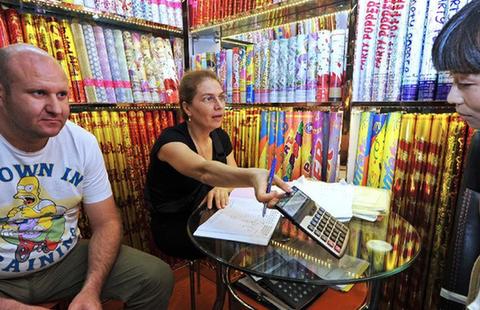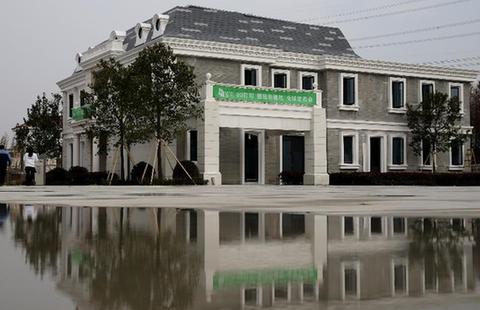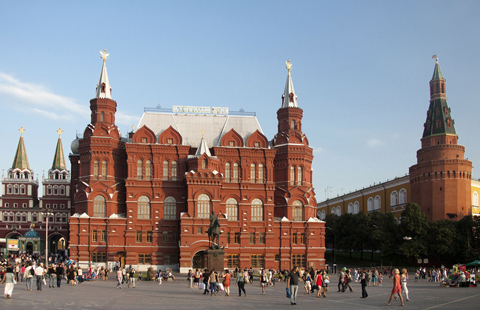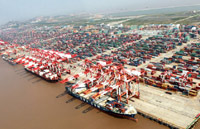China set to miss annual growth target
By CHEN JIA/LI XIANG (China Daily) Updated: 2015-01-20 10:19As the National Bureau of Statistics prepares to release its final economic data of 2014 on Tuesday, economists say that despite economic growth retreating to a 24-year low they do not expect any aggressive policy stimuli as top leaders appear happy to accept a "new normal" rate of development.
International and local financial institutions were practically united on a GDP growth prediction of 7.4 percent for last year, a drop from 7.7 percent in 2013 and the first time in 16 years that the government has missed its annual growth target.
Premier Li Keqiang issued 2014's economic growth target of 7.5 percent in March. The last time the world's second largest economy missed its target was in 1998, in the wake of the Asian financial crisis. GDP growth that year was 7.8 percent that year, against an 8 percent target.
At that time, the Beijing government adopted a proactive fiscal policy, deciding not to devalue the national currency in an effort to avoid destabilizing the financial markets or global financial growth any further.
Wang Jun, a senior economist at the China Center for International Educational Exchange, a government think tank, said that "micro stimulation" instead of any strong policy package would continue to offer stability to growth in 2015.
"Signs have shown that the economic structure is improving, and the slowdown is still under control."
Jeremy Stevens, an economist at the Standard Bank of South Africa Ltd, expects the figures to confirm that the loss in momentum had continued throughout the past year.
"The much-talked about soft landing is still to materialize-unless, of course, the 'new normal' implies a period of continual deceleration," he said.
Stevens predicts full-year growth may slide further in 2015 to 6.9 percent, however, as both industrial performance and fixed-asset investment remain weak and exports appear to be in for another tough year.
Fixed asset investment, which used to be the strongest driving force of the economy, may slip to 15.7 percent in 2014, he said, a slowdown from the 20 percent growth in 2012 and 2013, while industrial production growth is likely to decelerate to 8 percent last year from 9.7 percent in 2013. He said retail sales may expand by 12 percent in 2014, compared with 13.1 in 2013.
A report from Standard Chartered Bank has already forecast the central bank may cut its benchmark interest rates by 25 basis points in the first quarter of this year to support stable economic growth.
Zhu Jianfang, chief economist at CITIC Securities Co Ltd, suggested the growth rate in the last three months of 2014 may remain unchanged at 7.3 percent, as it was in the third quarter, and that the services industry is likely to contribute more than half of the GDP growth.
According to the latest data from the NBS, China's inflation eased to 2 percent last year, compared with 2.6 percent in 2013.
"We believe rising deflationary pressure will spur the central bank to cut benchmark lending rates by at least 50 basis points in 2015," said Wang Tao, chief economist in China at UBS AG. "Local government bond issuance will further help lower financing costs and alleviate debt service burden."
"The decline in commodity and energy costs, as well as a reduction in borrowing costs, should help improve corporate margins," she said.
More funds to be available for green projects
The China Banking Regulatory Commission issued a guideline on Monday to encourage greater allocation of bank loans to companies and industries involving in environmental protection, and energy-efficiency projects.
Ye Yanfei, an official at the CBRC, said that future projects that maximize and improve the utilization of energy and resources would be favored, as the country continues its war against serious pollution and environmental problems.
Ye said the regulator was also considering the launch of a "green" interbank bond, and asset-backed securities based on loans to green projects, to expand the amount of funding available to the sector.
The document outlined key areas and industries that would be eligible for green loans, including the traditional energy sector, and the construction and transportation sectors, both of which are facing problems related to energy inefficiency.
At the end of June last year the value of outstanding loans made to the country's environmental protection projects stood at 4.16 trillion yuan ($670 billion), accounting for 6.43 percent of total lending, according to CBRC.
China's environmental industry is growing at 15 percent annually with total output value expected to hit 4.5 trillion yuan.
China plansd to invest 2.37 trillion yuan in key projects aimed at improving energy efficiency within the 12th Five-Year Plan (2011-15), according to the National Development and Reform Commission.
Banks previously had little incentive to offer loans to green projects as they often involved high due diligence costs and
- Economic growth edges to 24-year low of 7.4%
- Carmaker Autoeuropa exports rise by 12% in 2014
- Chinese 'makers' turn fake products market into innovation base
- Wang reported to take 20 percent stake in Atletico
- WEF expects to know more about fresh opportunities from China
- China's energy giant willing to cooperate in Arctic resources extraction
- Exports of Zhejiang in 2014 increase 8.8% year on year
- Regular inspection not to suppress stocks
















